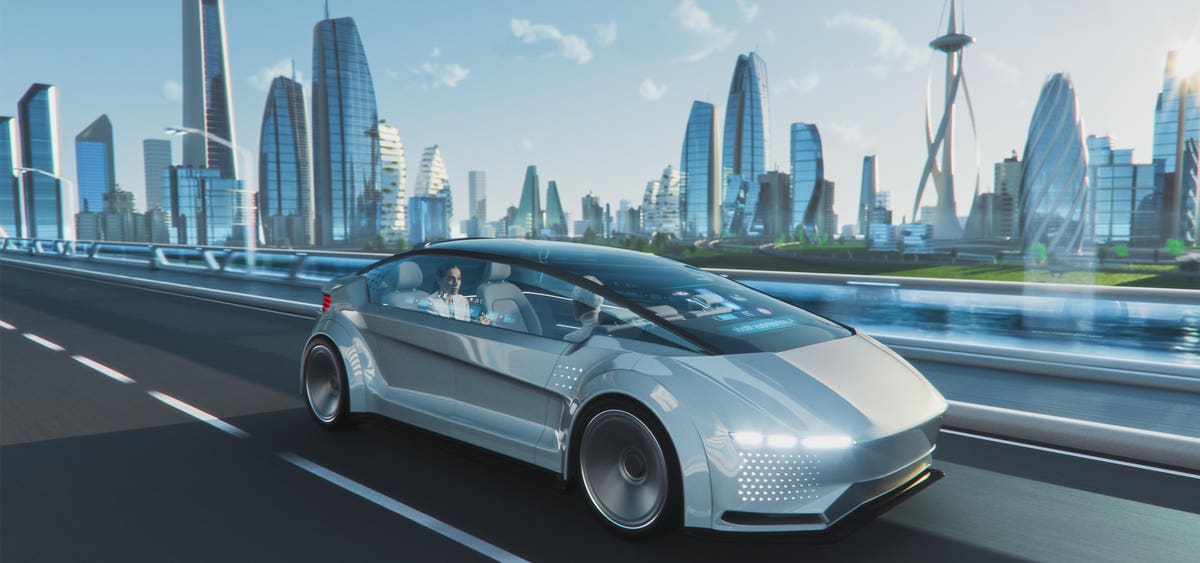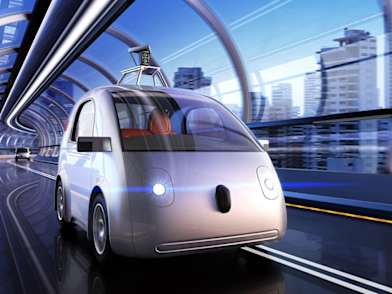The automotive industry is witnessing an unprecedented transformation as autonomous vehicles take center stage in modern transportation. Self-driving technology, powered by artificial intelligence (AI), machine learning, and advanced sensor systems, is paving the way for a future where human-driven cars become a thing of the past. As major tech firms and automakers push the boundaries of automation, the impact of autonomous vehicles on mobility, safety, and urban planning is becoming increasingly significant.
The Evolution of Autonomous Vehicles
Autonomous vehicles have come a long way from their initial conceptualization. The idea of self-driving cars dates back to the early 20th century, but significant advancements only gained momentum in the past decade. Companies like Tesla, Waymo, and General Motors have been at the forefront of developing AI-powered vehicles capable of navigating roads with minimal human intervention.
The Society of Automotive Engineers (SAE) has categorized autonomous vehicles into six levels, ranging from Level 0 (no automation) to Level 5 (full automation). While current models operate at Levels 2 and 3, where driver assistance systems handle some functions, the future promises fully autonomous cars that require no human input. With continuous innovation, we are moving closer to a world where autonomous vehicles dominate roadways.
How Autonomous Vehicles Work
The functionality of autonomous vehicles is rooted in a combination of sensors, software, and AI-driven algorithms. LiDAR (Light Detection and Ranging) and radar sensors create a 3D map of the surroundings, allowing vehicles to detect objects, pedestrians, and road signs accurately. Cameras analyze lane markings, traffic lights, and signals, while AI interprets data to make real-time driving decisions.
Machine learning plays a crucial role in refining self-driving capabilities. By processing vast amounts of driving data, autonomous vehicles improve their decision-making, adapting to complex road conditions. The integration of connected vehicle technology also allows autonomous cars to communicate with traffic systems, reducing congestion and improving overall efficiency on the roads.
Benefits of Autonomous Vehicles
The widespread adoption of autonomous vehicles presents numerous advantages, ranging from enhanced safety to environmental benefits. These self-driving machines are set to reshape transportation systems and redefine the way people commute.
1. Improved Road Safety
Human error is the leading cause of traffic accidents worldwide. Distractions, fatigue, and impaired driving contribute to millions of road fatalities each year. Autonomous vehicles eliminate these risk factors by relying on precise algorithms and sensors that react faster than human drivers. By reducing the margin of error, self-driving cars have the potential to make roads significantly safer.
2. Reduced Traffic Congestion
Urban areas suffer from severe traffic congestion, leading to lost productivity and increased fuel consumption. Autonomous vehicles optimize traffic flow by reducing unnecessary braking and acceleration. They communicate with each other and with traffic management systems to maintain optimal speeds and avoid bottlenecks, resulting in smoother traffic conditions and reduced commute times.
3. Accessibility for All
Autonomous vehicles offer a new level of mobility for individuals who are unable to drive, including the elderly and people with disabilities. Self-driving technology ensures that transportation becomes more inclusive, providing independence and convenience to those who rely on others for mobility. Ride-hailing services powered by autonomous vehicles will further enhance accessibility for diverse populations.
Challenges in Autonomous Vehicle Deployment
Despite the promising benefits, the widespread adoption of autonomous vehicles comes with challenges that need to be addressed before they become mainstream. These obstacles range from technological limitations to legal and ethical concerns.
1. Legal and Regulatory Hurdles
The introduction of autonomous vehicles requires significant updates to existing traffic laws and insurance policies. Governments must establish clear guidelines on liability in case of accidents involving self-driving cars. While some countries have made progress in regulating autonomous vehicle testing, a global framework is necessary to ensure a smooth transition to driverless transportation.
2. Public Trust and Acceptance
Although self-driving technology has advanced considerably, public skepticism remains a major barrier to adoption. Many people are hesitant to trust AI-powered vehicles, fearing potential malfunctions or software errors. High-profile accidents involving autonomous vehicles have further fueled concerns. Building public confidence through transparent testing, safety demonstrations, and awareness campaigns is crucial for widespread acceptance.
3. Cybersecurity Risks
As autonomous vehicles rely heavily on connectivity and software systems, they become vulnerable to cyber threats. Hackers could potentially manipulate vehicle systems, leading to safety risks and data breaches. Ensuring robust cybersecurity measures, including encryption and real-time monitoring, is essential to protect self-driving cars from cyberattacks.
The Future of Autonomous Vehicles

Looking ahead, the impact of autonomous vehicles on transportation will extend beyond personal mobility. From ride-sharing services to commercial logistics, self-driving technology is set to revolutionize various industries and redefine how goods and people move.
1. Autonomous Ride-Sharing and Public Transit
Companies like Uber and Lyft are investing in autonomous vehicle technology to offer cost-effective and efficient ride-hailing services. Self-driving taxis will eliminate the need for human drivers, reducing operational costs and providing 24/7 transportation availability. Public transit systems are also exploring autonomous buses and shuttles to enhance urban mobility and reduce congestion.
2. Self-Driving Freight and Logistics
The logistics industry stands to benefit significantly from autonomous vehicle integration. Self-driving trucks will revolutionize freight transportation by reducing delivery times, optimizing fuel efficiency, and minimizing human-related delays. Companies such as Waymo and Tesla are already testing autonomous freight solutions to streamline logistics operations.
3. Smart Cities and Connected Infrastructure
As autonomous vehicles become more prevalent, urban planning and infrastructure will evolve to accommodate them. Smart cities will incorporate intelligent traffic management systems, connected road networks, and AI-driven traffic signals to enhance efficiency. The integration of autonomous vehicles with smart city initiatives will lead to reduced emissions, improved safety, and better urban mobility.
Conclusion
Autonomous vehicles are poised to revolutionize transportation by offering safer, more efficient, and more accessible mobility solutions. While challenges such as legal regulations, public perception, and cybersecurity risks remain, continuous advancements in AI and automation are driving self-driving technology closer to widespread adoption.
With industries adapting to this transformative shift, the future of transportation will be shaped by autonomous ride-sharing, freight logistics, and smart infrastructure. The era of driverless vehicles is approaching, and with ongoing technological innovation, the way people and goods move will never be the same. As we embrace this autonomous revolution, the road ahead looks promising, and the future of mobility has never been more exciting.
